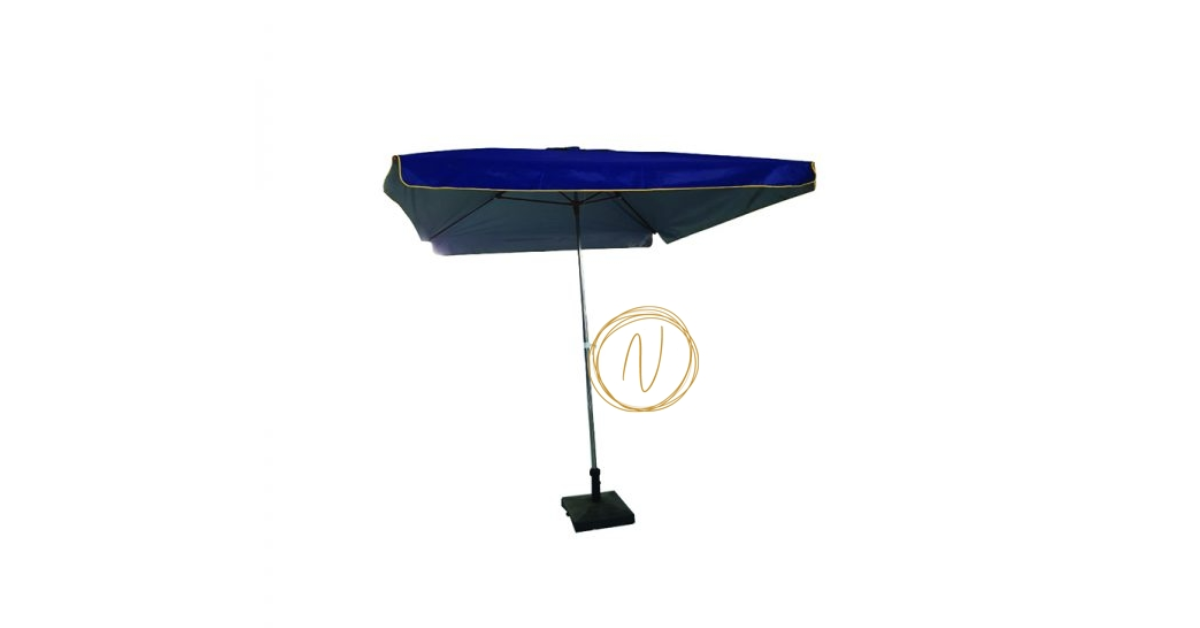The Ultimate Guide to Choosing and Using a Beach Umbrella
A Beach Umbrella is an essential accessory for anyone who loves spending time outdoors. More than just a decorative piece, it provides critical protection from the sun’s harmful UV rays, shields against wind and sand, and creates a comfortable shaded space to relax. Whether at the seaside, poolside, or in your backyard, a well-chosen beach umbrella can transform your outdoor experience. This guide will explore everything you need to know about beach umbrellas, including types, features, safety tips, and maintenance, helping you make the most informed choice.
Why You Need a Beach Umbrella
Spending long hours under the sun without protection can lead to sunburn, heatstroke, and long-term skin damage. A beach umbrella offers a simple and effective solution. Its primary purpose is to provide shade, lowering the temperature underneath and reducing direct exposure to UV rays. Unlike makeshift coverings or towels, beach umbrellas are designed for stability and durability, ensuring they remain secure even on windy days. In addition, they create a personal space for families or groups, offering privacy and comfort while enjoying outdoor activities.
Beach umbrellas are not only functional but also versatile. They are lightweight and portable, making them easy to carry to the beach, park, or backyard. Some designs even include additional features like tilt mechanisms, vented canopies, or side flaps for added protection. Choosing the right umbrella can improve your outdoor experience, making your time in the sun safe and enjoyable.
Types of Beach Umbrellas
Beach umbrellas come in a variety of types, each suited for different environments and purposes. Understanding these types can help you select the most suitable option for your needs.
1. Standard Round Umbrellas
Round umbrellas are the most common and versatile type. Typically ranging from six to eight feet in diameter, they provide adequate shade for one to three people. These umbrellas are lightweight and easy to transport, making them ideal for casual beach trips or small gatherings. Some models include tilting features that allow the canopy to follow the sun’s movement.
2. Oversized Umbrellas
For families or groups, oversized umbrellas are a perfect choice. These umbrellas can measure nine feet or more, providing ample shade for multiple people. They are also suitable for beachside picnics, outdoor events, or poolside lounging. Oversized umbrellas often come with sturdy frames and heavy-duty fabric to maintain stability in windy conditions.
3. Square and Rectangular Umbrellas
Less common but increasingly popular, square or rectangular umbrellas offer unique advantages. They provide more usable shaded space and are ideal for dining areas, beachside setups, or paired configurations. Their modern aesthetic also makes them a stylish addition to patios or gardens.
4. Cantilever or Offset Umbrellas
Cantilever umbrellas have a side-mounted pole that supports the canopy, allowing more flexible placement and unobstructed space underneath. While slightly heavier and more expensive, these umbrellas provide excellent shade coverage and are particularly useful for backyard patios or large outdoor spaces.
Key Features to Consider
When choosing a beach umbrella, several features can enhance comfort, durability, and safety. Paying attention to these factors ensures that you invest in a high-quality product that meets your needs.
1. Fabric Material and UV Protection
A high-quality beach umbrella is made from durable, UV-resistant fabric. Polyester and acrylic fabrics are commonly used for their strength and resistance to fading. Many umbrellas also come with UPF (Ultraviolet Protection Factor) ratings, which indicate how effectively the fabric blocks UV radiation. A UPF of 50+ is recommended for optimal sun protection.
2. Frame Material
The frame material affects both durability and portability. Aluminum frames are lightweight, rust-resistant, and ideal for beach environments. Fiberglass ribs provide flexibility and are less likely to break in strong winds. Steel frames are heavy-duty and durable but can be prone to rust if not properly coated or maintained.
3. Size and Coverage
Consider the number of people who will use the umbrella. A small umbrella may suffice for individual use, but larger families or groups require bigger canopies. Oversized umbrellas or multiple umbrellas can provide adequate shade for everyone.
4. Tilt and Ventilation Mechanisms
A tilt mechanism allows you to adjust the angle of the canopy, following the sun’s movement throughout the day. Ventilation features, such as a vented top, allow wind to pass through, reducing lift and preventing the umbrella from tipping over. These features are particularly important on windy beaches.
5. Anchoring Systems
Stability is crucial for safe use. Quality beach umbrellas come with sand anchors, screw-in systems, or weighted bases that secure the pole in soft or uneven ground. This ensures that the umbrella remains in place even on windy days.
Choosing Between Budget and Premium Models
Beach umbrellas are available in a wide price range, from budget-friendly options to high-end professional models. Choosing between them depends on your usage and priorities.
Budget Umbrellas
Economical umbrellas are lightweight, portable, and easy to set up. They are suitable for casual beachgoers who need occasional sun protection. However, they may use less durable fabrics and weaker frames, making them more susceptible to damage in harsh conditions.
Premium and Professional Umbrellas
Premium models are designed for frequent or commercial use, such as at resorts or outdoor cafés. They typically feature heavy-duty frames, high-quality fabrics, and advanced mechanisms like tilt and vented canopies. Although more expensive, they offer superior durability, wind resistance, and long-term value.
Safety Tips for Using a Beach Umbrella
Using a beach umbrella safely is just as important as choosing the right one. Follow these guidelines to ensure a secure and enjoyable experience:
-
Anchor Properly: Always secure the umbrella with an appropriate anchor system. Loose umbrellas can easily blow away in wind, posing a danger to others.
-
Monitor Weather Conditions: Close or tilt the umbrella if the wind picks up. Avoid using it during storms or strong gusts.
-
Combine with Sun Protection: Even with shade, harmful UV rays can reach your skin indirectly. Always use sunscreen and protective clothing in addition to the umbrella.
-
Check for Damage: Regularly inspect the frame and canopy for signs of wear or weakness. Repair or replace damaged parts promptly to prevent accidents.
Maintenance and Care
Proper care extends the lifespan of your beach umbrella. Here are some essential maintenance tips:
Cleaning
Remove sand, dirt, and salt regularly. Use a soft brush or cloth to clean the canopy. If the fabric is removable, wash it gently with mild soap and cold water, then air-dry completely before reassembling. Spot-clean non-removable canopies as needed.
Frame Maintenance
Wipe down metal frames with a damp cloth to remove salt or dirt. Fiberglass frames can be rinsed with fresh water. Wooden poles should be treated periodically to maintain their finish and prevent cracking.
Storage
Always close and dry the umbrella before storing it. Moisture can lead to mold or mildew on the fabric. Store umbrellas in a dry, covered area during the off-season to protect them from the elements.
Benefits of Beach Umbrellas Beyond Sun Protection
While shade and sun protection are the primary benefits, beach umbrellas also offer:
-
Comfort: A shaded area lowers the temperature, making outdoor activities more enjoyable.
-
Privacy: Large or strategically placed umbrellas create a private space at crowded beaches or parks.
-
Aesthetic Appeal: With a wide range of colors and designs, umbrellas enhance the visual appeal of any outdoor space.
-
Versatility: Suitable for beaches, patios, gardens, poolside areas, and outdoor events.
Tips for Maximizing Your Beach Umbrella Experience
-
Choose Vibrant Colors: Bright, colorful umbrellas are easier to spot from a distance and add a cheerful vibe.
-
Pair with Accessories: Consider carrying a ground mat, beach chairs, or storage pockets to complement your umbrella setup.
-
Adjust Throughout the Day: Shift or tilt the umbrella as the sun moves to maintain effective shade.
-
Combine with Windbreaks: On particularly windy beaches, use additional barriers or sandbags to stabilize the umbrella.
Conclusion
A beach umbrella is a simple yet indispensable tool for outdoor comfort, protection, and style. From casual beach trips to family gatherings and commercial applications, choosing the right umbrella can greatly enhance your outdoor experience. Consider factors such as size, material, UV protection, stability, and maintenance when selecting an umbrella. By investing in a high-quality product and following proper safety and care practices, you can enjoy hours of safe, shaded relaxation under the sun. Whether for personal use or as part of a larger outdoor setup, a beach umbrella is a versatile and practical addition that combines functionality, comfort, and aesthetic appeal.







